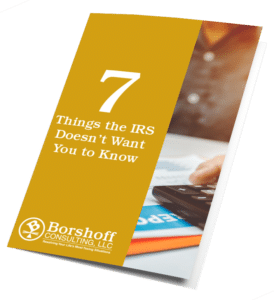If you have a dependent who does not qualify for the Child Tax Credit, you may be able to benefit from the Credit for Other Dependents. This tax credit is a nonrefundable credit worth up to $500 per eligible dependent and cannot be claimed for the Child Tax Credit.
Not everyone has a family with just a spouse and children. Often, we are required to take care of our elders or have other people we claim as dependents but who do not qualify for the Child Tax Credit. In these instances, the Credit for Other Dependents can be quite a blessing.
Please note that you will not be able to claim the Child Tax Credit and the Credit for Other Dependents in the same year, using the same child. This is important because you want to make sure you are eligible for all tax credits you claim on your tax return.
What is the Credit for Other Dependents?
The Credit for Other Dependents was created for taxpayers with dependents who don’t qualify for the Child Tax Credit; taxpayers are allowed to claim $500 per dependent.
Children over the age of 17 years old, elderly dependents who rely on you for their care, and dependents with an Individual Taxpayer Identification Number (ITIN) are considered to be qualifying dependents for the purposes of the Credit for Other Dependents, also known as the Family Tax Credit.
Keep in mind that tax credits are different from tax deductions, which just reduce your taxable income. Tax credits reduce your tax liability, making your tax bill lower.
Who is allowed to claim the tax credit?
The Credit for Other Dependents is for taxpayers with a dependent who meets specific criteria. You must meet all of the following conditions:
- The dependent is actually claimed as a dependent on your tax return. Determining whether you are qualified to take someone as your dependent can be a tricky thing. Make sure you understand the rules related to claiming dependents to avoid any penalties. IRS Publication 501: Dependents, Standard Deduction, and Filing Information expands on this in more detail.
- The dependent, for the purposes of this credit, cannot be claimed if the Child Tax Credit or Additional Child Tax Credit is also claimed by the taxpayer trying to claim the Credit for Other Dependents.
- The taxpayer must be a United States citizen, United States national, or United States resident alien. For further information on whether you meet this requirement, see IRS Publication 519: Tax Guide for Aliens. If this dependent is your adopted child, check out specific information relating to the Adoption Tax Credit.
How much is this tax credit worth?
The maximum tax credit amount of your Credit for Other Dependents, which cannot be more than $500 per dependent per tax year, may be reduced if your taxable income amount is less than the total of both credits (the Child Tax Credit and the Credit for Other Dependents).
You are not permitted to take this tax credit if that amount is zero because you have no tax to reduce, and this credit is not a refundable tax credit, so you will not get a tax refund if there is any overage on your tax return.
How does the tax credit work when filing your taxes?
The maximum tax credit amount you can claim is $500 per dependent, provided they qualify for the Credit for Other Dependents.
To claim this tax credit, you must have a TIN (Tax Identification Number). You can usually find this as the person’s Social Security number, Individual Taxpayer Identification Number (ITIN), or Adoption Taxpayer Identification Number (ATIN).
You need to have your TIN for each child before taking this credit, so if you know you’ll be claiming this credit, apply for a TIN as soon as you can. If you do not have or have not been issued an SSN, ITIN, or ATIN by the end of the year, you cannot use the person to claim the Credit for Other Dependents.
If you wish to claim the Credit for Other Dependents, you must meet the following requirements:
- You must file IRS Form 1040 or IRS Form 1040-NR, including listing the name and TIN of each dependent for whom you’re claiming the Credit for Other Dependents.
- You must file IRS Form 8862: Information to Claim Certain Credits After Disallowance if applicable to your circumstances.
- You must enter a timely issued TIN for both you and your spouse if filing a joint tax return. Refer to the Taxpayer Identification Number Requirements for more information.
- For each dependent for whom you are claiming the Credit for Other Dependents, you must enter the timely issued TIN for the dependent on the Dependents section of your tax return and check the box for the Credit for Other Dependents, as instructed on your tax form.
When completing the tax forms, do not check both the Child Tax Credit and the Credit for Other Dependents boxes for the same person. You must decide which tax credit you are eligible for in regards to that particular dependent and pick the one that’s most valuable for you.
This is not always an easy thing to do, especially when trying to claim a number of tax credits. For example, you may qualify for the Adoption Tax Credit, the Credit for Other Dependents, and the Child Tax Credit. You may be asking, “Which am I eligible for? Which should I take?”
The best way to answer these questions is to seek the counsel of a qualified tax consultant, someone who has experience filing tax returns, and a person who knows all about the latest rules and regulations regarding each tax credit. Plus, they should know about any discontinued tax credits and laws relating to filing tax returns.
What are the income limitations of this credit?
To be qualified to take this tax credit, your modified adjusted gross income (MAGI) must be greater than the amount set forth based on your filing status. If you and your spouse are joint filers, the income limit is $400,000. For all other filing statuses, the limit is $200,000.
For the purposes of this tax credit, your modified adjusted gross income is your adjusted gross income plus any of the following that applies to you:
- Amounts excluded from your income because of the exclusion of income from Puerto Rico.
- Amounts on line 45 or line 50 of IRS Form 2555: Foreign Earned Income.
- Amounts on line 18 of IRS Form 2555-EZ: Foreign Earned Income Exclusion.
- Amounts on line 15 of IRS Form 4563: Exclusion of Income for Bona Fide Residents of American Samoa.
If you do not have any of the above amounts, your modified adjusted gross income (MAGI) amount will just be your adjusted gross income (AGI) amount.
What else should I know about this tax credit?
The Credit for Other Dependents is in addition to the Credit for Child and Dependent Care Expenses, which uses Schedule 3 and IRS Form 1040. It’s also in addition to the Earned Income Tax Credit (EITC), which also uses IRS Form 1040.
You may be able to take the Additional Child Tax Credit if you are claiming the Child Tax Credit, but you cannot take the Additional Child Tax Credit if you are only claiming the Credit for Other Dependents.
Conclusion
The 2017 Tax Cuts and Jobs Act still has the Credit for Other Dependents as part of the allowable tax credits for qualified individuals. Does this credit have you stumped, or are you unsure which tax credit would be most beneficial for you?
Consider reaching out to a qualified tax professional who can help you file your taxes, offer sound tax advice, or represent you in the event of an audit. If you are looking to connect with a knowledgeable tax accountant, you’ve come to the right place.
We are happy to help you with any of these issues and more. Just contact us, and we’ll see how we can help. You can trust Indiana’s tax expert!





